Back to Phase 2
As in the Phase 1 simulations, there is a shocktube gas (gas1)
and a lensing gas (gas2) related by a density ratio (gas2 / gas1 ) of 1.4. The shocktube gase (gas1) has gamma=1.5, while the lens (gas2) has a gamma of 1.4.
In addition to these two gases, there is a target gas inside the wedge (gas3). For the simulation presented here,
the target gas was taken to have gamma 1.09 and a density related to gas2 by gas3/gas2 = 5. This would be consistent
with using Air for the lensing gas and SF6 for the target gas.
Unlike the other 2D Phase 2 simulation, large perturbations were put on the interface between the lens and target to stimulate the development of a Richtmyer-Meshkov instability. A question of interest in
this 2D simulation is the eventual location of the mixing zone that results from this instability and the extent to which gas1 is involved.
The extended clawpack solvers were used for this simulation, the code is documented and the Phase 2 input files can be found in the repository. A base resolution of 250x100 was used with 4 additional levels of refinement (factors 2,2,2,2).
As a test of the very different patch solver code used in the WENO and clawpack versions for multiple species, this image of the flow at t=0.09ms shows good agreement.
Here is a series of images showing the density feild as this flow evolves. These
snapshots are taken from this animation.
- time t=0ms: initial conditions
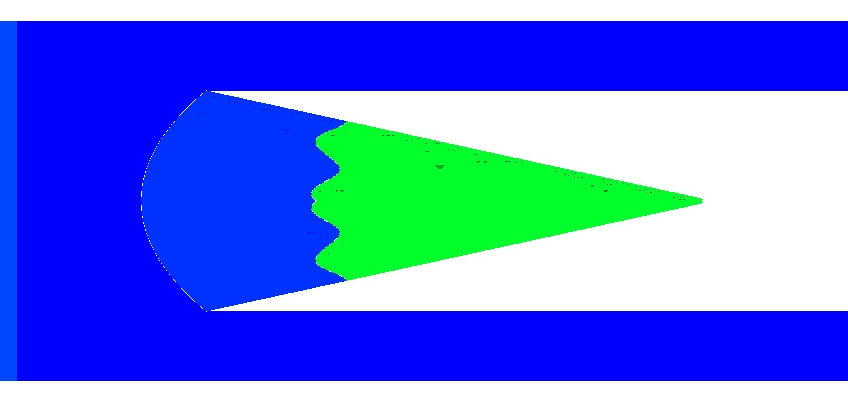
- time t=0.27ms: the shock has been lensed into a circular form
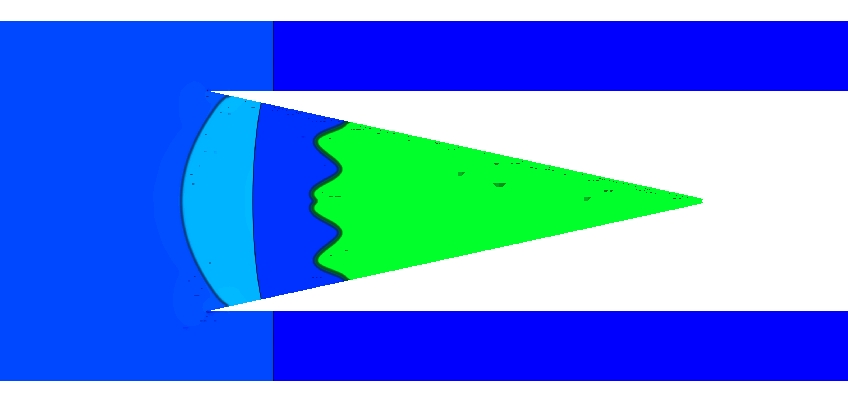
- time t=0.9ms: bubble and spike development at the Air/SF6 interface
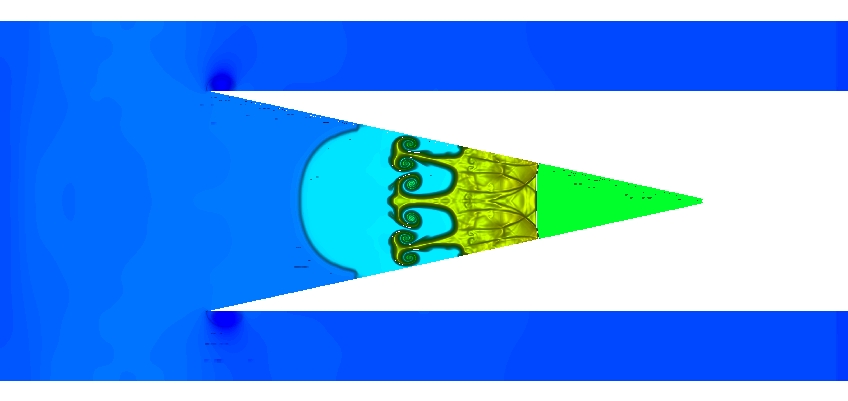
- time t=1.63ms: shortly after shock reflection off apex
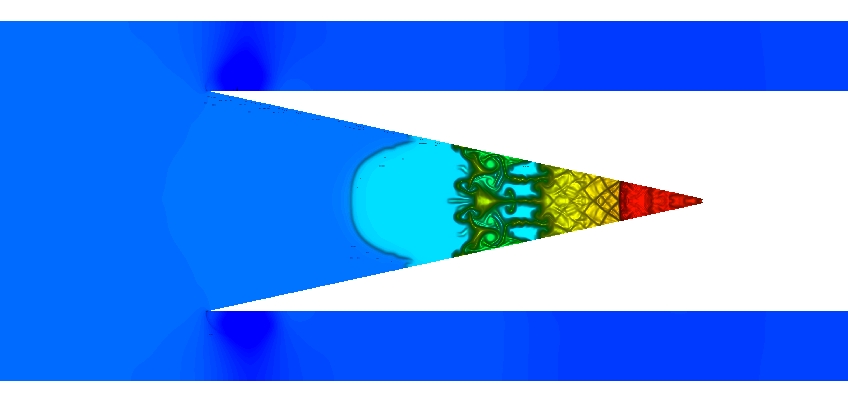
- time t=2.07ms: just after reshock of Air/SF6, and during shock interaction with lens
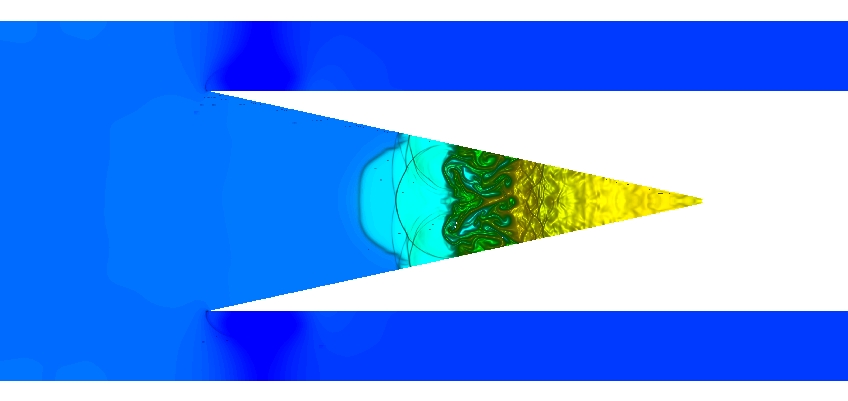
- time t=2.43ms: shock near exit of domain
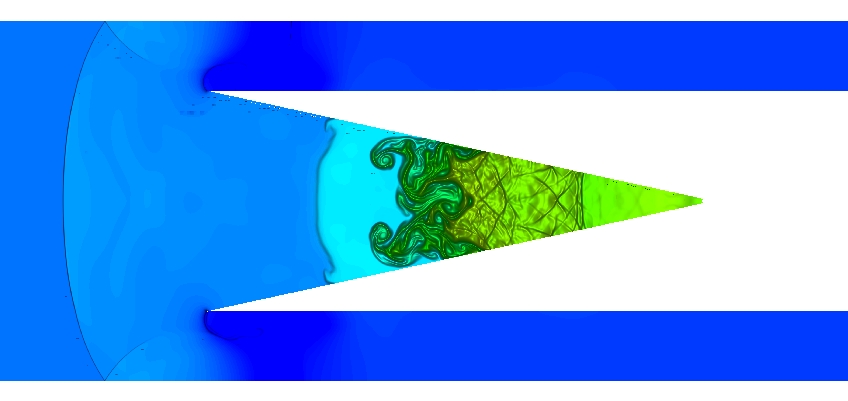
- time t=3.51ms: much later evolution of mixing area
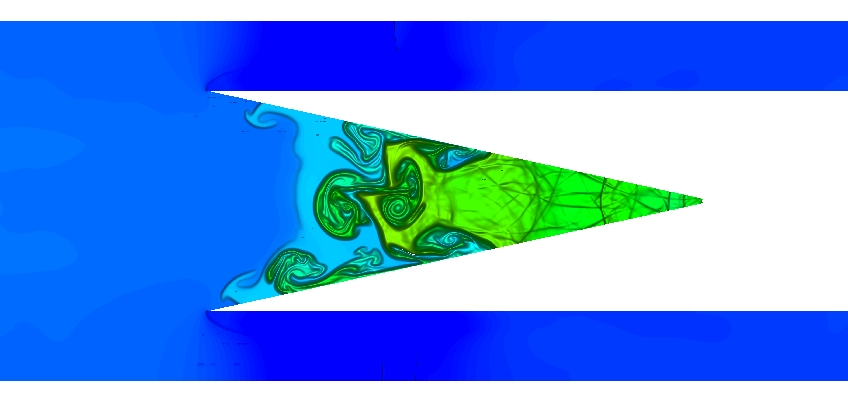
Attachment  | Action | Size | Date | Who | Comment |
|---|---|---|---|---|---|
| | manage | 1070.8 K | 31 Oct 2005 - 01:13 | DavidHill | Animation of the shock focusing |